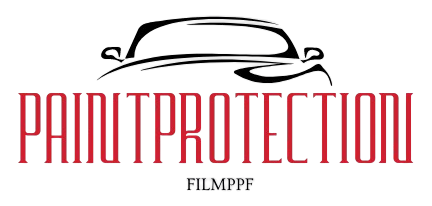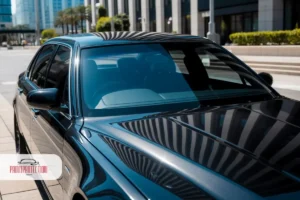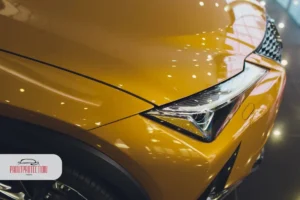PPF removal in 2025 has become one of the most discussed topics among car enthusiasts, detailers & vehicle owners who want to refresh their vehicle’s appearance or replace old protective film. Over time, paint protection film can discolor, peel, or lose clarity, which makes ppf removal a necessary process to restore a clean surface. Many people wonder how to remove ppf safely without damaging the paint underneath, & that’s exactly what this detailed guide will help you understand.
Whether you are planning a DIY approach or looking for professional ppf removal near me, knowing the right methods, tools & steps is essential to avoid unnecessary risks. The goal of this article by paintprotectionfilmppf is to educate you about the safest techniques, the real ppf removal cost, the signs that indicate film failure, & whether DIY or expert assistance is the best option. As vehicles age & film technology changes, removing ppf properly is more important than ever, especially when considering repaint protection or a fresh film installation.
Why PPF Removal in 2025 Matters
PPF removal in 2025 is more significant than ever due to evolving vehicle paint technologies, improved film materials, & the increasing number of vehicles that already have paint protection film installed. Many drivers are realizing that PPF is not permanent, & after years of exposure to heat, UV rays, road debris, & moisture, the film can begin to fail. When that happens, removing ppf becomes essential to maintain the beauty & integrity of a vehicle’s paint surface.
Modern automotive paints are thinner & more delicate than older coatings, which means improper ppf removal methods can easily cause scratches, adhesive residue issues, or even peeling of the original clear coat. That’s why understanding how to remove ppf safely has become a priority for both enthusiasts & professionals. The condition of the film determines whether removal is easy or extremely challenging, especially when it has been installed for over 5–7 years.
In 2025, new heating tools, adhesive softeners, & controlled steam equipment have made PPF removal in 2025 safer & more accessible, reducing risks that were common years ago. Whether someone chooses DIY or hires an expert through a search like ppf removal near me, knowing the right procedure can save time, money & protect the paint from unnecessary damage.
Signs It’s Time for PPF Removal in 2025
Understanding the right moment to begin PPF removal in 2025 can prevent more costly repair work later. Paint protection film is designed to defend your paint from chips, scratches, UV rays & chemical damage, but like any protective layer, it has a lifespan. When the film begins to fail, removing ppf becomes essential to avoid irreversible paint deterioration.
1. Yellowing or Discoloration
One of the most common signs it’s time to start considering ppf removal is when the film begins to turn yellow or cloudy. This usually happens because of prolonged exposure to heat, sunlight & environmental contaminants. If clarity is lost, the film can make the car look older rather than cleaner.
2. Cracking & Peeling
When PPF starts cracking or peeling at the edges, the adhesive breaks down & loses its ability to remain flexible. This condition makes the film harder to remove safely & can increase ppf removal cost if ignored too long.
3. Bubbling or Lifting
Bubbles can appear due to aging adhesive, trapped moisture or improper installation. Once bubbles begin to spread, how to remove ppf becomes more complicated because the damaged film is harder to lift in clean sheets.
4. Hard Texture or Brittleness
Old film becomes dry & hard, causing it to break into pieces instead of peeling off smoothly. This can significantly increase the time required for PPF removal in 2025 & make the process more labor-intensive.
5. Change of Vehicle Style or Film Replacement
Even when the film is still intact, some drivers choose ppf removal simply to replace it with a newer, more advanced film. Whether upgrading or preparing for resale, removing ppf helps restore a flawless finish.
How to Remove PPF Safely: Step-by-Step Guide (DIY Method)
Many vehicle owners want to know how to remove ppf themselves without paying for professional services. While DIY ppf removal is possible, it requires patience, the right tools & careful attention to avoid damaging your car’s paint. Here’s a step-by-step guide for safe PPF removal in 2025.
Step 1: Gather the Necessary Tools
Before starting, make sure you have:
- A heat gun or hair dryer
- Plastic scraper or squeegee (soft-edged)
- Microfiber towels
- Adhesive remover (optional for stubborn residues)
- Gloves to protect your hands
Step 2: Clean the Vehicle Surface
Wash & dry the car thoroughly. Removing dirt & debris ensures you don’t scratch the paint while peeling off the film.
Step 3: Warm the Film
Using a heat gun or hair dryer, gently warm a small section of the film. Heat softens the adhesive & makes peeling easier. Avoid overheating, which can damage the paint underneath.
Step 4: Start Peeling from an Edge
Use your fingers or a plastic scraper to lift a corner of the film. Slowly pull back at a 45-degree angle. Pulling too fast can tear the film, creating more work.
Step 5: Remove Adhesive Residue
After peeling, some adhesive may remain on the paint. Apply a dedicated adhesive remover or isopropyl alcohol to a microfiber towel & gently rub the residue.
Step 6: Clean & Inspect
Once the film is fully removed, wash the surface again to remove any leftover chemicals. Inspect the paint for scratches, discoloration, or other imperfections that may require correction before applying a new film.
Tips for Successful DIY PPF Removal
- Work in a shaded area or garage to avoid direct sunlight.
- Be patient — slow & steady peeling prevents paint damage.
- Avoid metal scrapers, which can scratch the surface.
- For large areas or old, brittle films, consider professional help to minimize ppf removal cost and risk.
This method is perfect for those who want to understand how to remove ppf at home, but some situations still require professional expertise.
Professional PPF Removal: When & Why You Should Consider It
While DIY ppf removal is possible, there are situations where hiring experts is the safest choice. Professional services not only save time but also reduce the risk of paint damage, ensuring the vehicle’s finish remains flawless.
When to Consider Professional PPF Removal
- Old or Brittle Film – Over time, film can harden, crack, or peel unevenly, making DIY removal tricky.
- Large Surface Areas – Full-vehicle PPF or intricate curves can be challenging to remove evenly without specialized tools.
- High-End or Expensive Vehicles – Any scratch or damage can be costly to repair, so professional handling is safer.
- Time Constraints – Professionals have experience & techniques that allow quicker, cleaner removal than most DIY attempts.
Benefits of Professional PPF Removal
- Minimized Risk of Paint Damage – Experts use heat, steam & specialized tools for safe removal.
- Efficient & Faster Process – Professionals can complete what may take hours for a DIYer in a fraction of the time.
- Clean Finish for Reinstallation – Prepares the vehicle for new film installation without leaving adhesive residue.
- Accurate Cost Assessment – Provides clarity on ppf removal cost, including labor & materials.
Many people search ppf removal near me to find trusted experts who understand the nuances of different film brands & vehicle surfaces. Choosing professional removal is often an investment in the long-term protection & appearance of your car.
PPF Removal Cost: What to Expect in 2025
Understanding ppf removal cost is crucial before deciding whether to tackle the job yourself or hire a professional. Costs vary depending on the film type, vehicle size, condition of the film & whether you choose DIY or expert services.

Factors That Affect PPF Removal Cost
- Film Age & Condition – Older, brittle, or damaged films require more labor, increasing cost.
- Vehicle Size & Complexity – Larger cars or intricate curves take more time & effort to remove film safely.
- DIY vs Professional Services – Doing it yourself reduces labor costs but may require purchasing tools or adhesive removers. Professional services typically charge per panel or per vehicle.
- Adhesive Removal & Surface Prep – Extra cleaning, chemical usage & prepping the surface for a new film can increase the overall price.
Average PPF Removal Cost Estimates
- DIY Removal: $20–$100 (mostly for tools & adhesive removers)
- Professional Partial Removal: $100–$300 per panel
- Full Vehicle Professional Removal: $400–$1,000+ depending on size & film condition
When budgeting for PPF removal in 2025, consider that professional removal ensures a safer process & can reduce the likelihood of additional costs from paint damage. Many vehicle owners combine removal with new film installation to maximize value.
Common Mistakes to Avoid During PPF Removal
Even with careful planning, mistakes during PPF removal in 2025 can happen, especially for DIY enthusiasts. Avoiding these errors ensures the process is safer, quicker & doesn’t harm your vehicle’s paint.
1. Pulling the Film Too Fast
Rushing the removal can tear the film into small pieces, leaving adhesive behind & increasing the effort required to clean the surface. Always peel slowly at a consistent angle.
2. Skipping the Heat Step
Heat softens the adhesive, making removal smoother. Removing film without warming it can cause cracks or scratches.
3. Using Metal Tools
Metal scrapers or knives may seem handy but can easily damage paint. Stick to plastic or soft-edged tools when removing ppf.
4. Ignoring Adhesive Residue
Not properly cleaning leftover adhesive can trap dirt, create bubbles, or interfere with new film installation. Use a safe adhesive remover or isopropyl alcohol.
5. Working in Direct Sunlight
Removing film under strong sunlight can cause adhesive to soften too quickly, making peeling uneven & messy. Work in a shaded area or garage.
6. Not Considering Professional Help
Some films, especially older or high-end ones, are extremely brittle. Attempting DIY removal without experience can increase ppf removal cost due to paint damage repair.
By avoiding these common mistakes, you can safely perform ppf removal or know when to seek professionals for a smooth & clean finish.
Tips for Maintaining Your Vehicle After PPF Removal
After PPF removal in 2025, proper maintenance ensures your vehicle’s paint stays protected & looks flawless, whether you plan to leave it bare or install a new film.
1. Wash & Dry Thoroughly
After removing the film, clean the vehicle with a gentle car shampoo & dry it with microfiber towels. This removes any residual adhesive, dust, or debris.
2. Inspect for Paint Damage
Check for scratches, swirl marks, or discoloration that may have been hidden under the film. Minor scratches can be corrected with polish or paint correction.
3. Apply a Protective Coating
Consider applying wax, ceramic coating, or a new paint protection film to maintain durability & shine. This prevents the paint from premature oxidation or UV damage.
4. Avoid Harsh Chemicals
Steer clear of strong cleaners or abrasive materials that could damage the newly exposed paint surface. Stick to pH-neutral car soaps & microfiber cloths.
5. Plan Ahead for New PPF
If you plan to reinstall PPF, ensure the surface is perfectly clean & free of residue. Professional installers often inspect the paint post-removal to ensure a smooth application.
By following these tips, you can prolong the life of your vehicle’s paint, protect your investment, & make future PPF removal or installation much easier.
Final Thought
PPF removal in 2025 is an essential process for maintaining a vehicle’s appearance, protecting its paint, & preparing it for new film installation. Whether choosing the DIY route or hiring professionals, understanding how to remove ppf, the right tools, common mistakes, & ppf removal cost ensures the job is done safely & effectively.
For anyone seeking trusted guidance or expert services, paintprotectionfilmppf provides reliable tips & insights to make the process smooth, efficient & damage-free. By following the methods outlined in this guide, vehicle owners can confidently tackle ppf removal while preserving their car’s finish & value. Investing time & care in proper removal today saves both money & stress tomorrow.
FAQs
Is it safe to remove PPF?
Yes, PPF removal is safe if done carefully using proper tools & heat to avoid damaging the paint.
Can PPF be easily removed?
It can be, depending on the film’s age & condition; newer films are generally easier to peel than old or brittle ones.
Can PPF be taken off?
Yes, removing ppf is possible with slow peeling, heat, & adhesive removal techniques.
Can PPF be removed and reapplied?
Some films can be carefully removed & reapplied, but most require new film for proper adhesion and appearance.
Can PPF be removed and reapplied?
Reapplying is possible only with certain premium films; typically, fresh ppf removal followed by new installation ensures best results.





